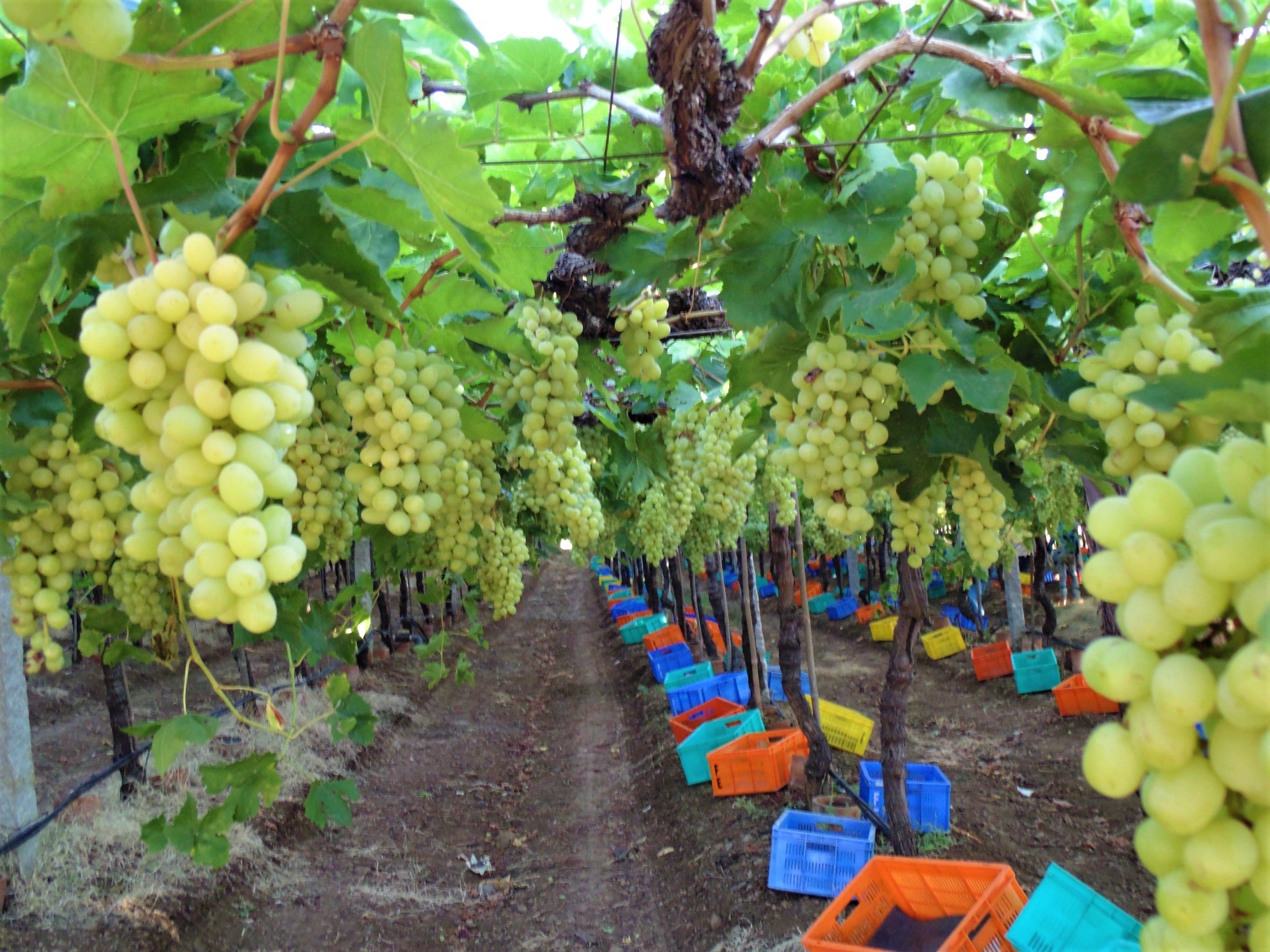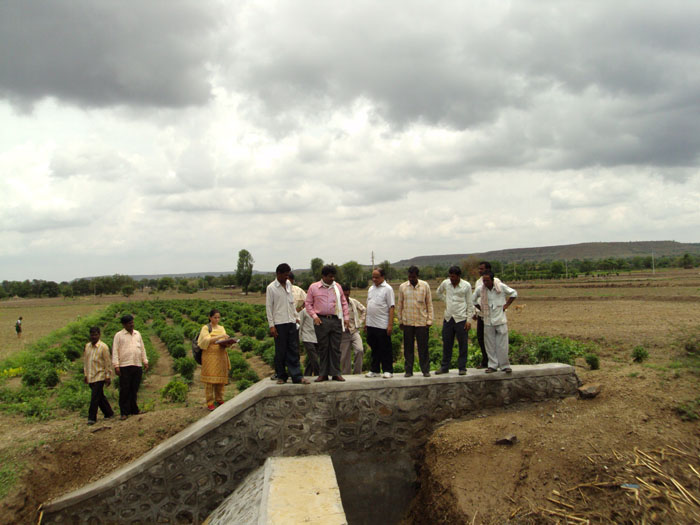In a Drought-Prone Marathwada Village, Farmers’ Incomes Have Gone up 700% in the Past Decade
Supported by KVK and ICAR, the residents of Kadwanchi embraced the spirit of the community conservation to transform their severely drought-prone hamlet into one of the most prosperous villages in the region.

The residents of Kadwanchi village in Jalna district of Maharashtra are least worried about the next monsoon or drought-like situations. In fact, the villagers haven’t been bothered by water scarcity in the last 10 years, including the 2012 drought (which was the worst in 40 years).
Rather, the conversation between the residents is about agricultural diversification and expansion. And not without reason: in the last two decades, the income of Kadwanchi’s residents has gone up by 700%.

Once a dry and dusty village, Kadwanchi’s prosperity is the result of a well-planned and well-executed watershed project that saw a sharp decline in the village’s vulnerability to water scarcity and dry spells. Interestingly, the village isn’t located in Maharashtra’s greener western belts of Konkan and Raigad, but in the heart of the drought-prone Marathwada region!
In 1996, Kadwanchi had all the characteristics of a severely drought-prone village – poor farm productivity due to poor quality of soil, rural-to-urban migration and subsistence-level agricultural incomes for the village farmers. It was to remedy this situation that the Krishi Vigyan Kendra (KVK) of Jalna, established by NGO Marathwada Sheti Sahaya Mandal, started a scientific watershed management project in the village.
Supported by a sponsorship from the Indian Council of Agricultural research (ICAR), New Delhi, the villagers and agri-experts began the project by implementing anti-erosion measures like contour bunding of farm boundaries, planting vegetation on ridges, building groundwater recharge pits and excavating water absorption trenches to check the erosive velocity of water.

Over the next five years, nearly 25 km of streams and rainwater nullahs were widened and desilted. The project team then built earthen embankments along these streams to create natural water harvesting structures. Proper spillways were installed to channel excess runoff to natural drains. As many as 9 check dams were built, 600 wells were excavated and over 300 farm ponds were created as part of the village’s collective water storage.
Within two years, the hard work of the villagers and the project team began bearing fruit. The slowed down pace of running water led to increased seepage, recharging the groundwater table and improving the moisture retention of the soil.

The resulting water security enabled Kadwanchi farmers to plant high value horticultural crops, such as grapes, pomegranates, ginger and chillies, on their farms. The cropping patterns were carefully thought out and researched to suit the climate pattern and annual average rainfall of the district.
ICAR and KVK did their part by ensuring that the farmers and agri-entrepreneurs received the training they required to do this. From conducting Front Line Demonstrations (FLD), farm trials and awareness camps to kisan melas (farmers’ camps) and mahila melavas (meetings of the women), experts from the two organisations remained in constant touch with farmers to help them find solutions to their problems.
Also Read: From Growing Its Own Forest to Selling Organic Fruits, This Village Funds Its Own Development
As farm incomes rose in the region, the villagers began investing in drip irrigation systems with technical help provided by KVK. Today, 100% of Kadwanchi’s farmland is drip-irrigated, with many farmers also installing a centralised control system (from where a specific part of a farm can be watered at any time). Kadwanchi’s proactive sarpanch has even procured a rain gauge so he can monitor the village’s water budget carefully.
Today, Kadwanchi has over 1,000 acres of flourishing grape orchards, along with pomegranate plantations, vegetable gardens and fields of rice, wheat and maize.These vineyards are the true measure of the village’s success in water management – an acre of grapes requires nearly 10 lakh litres of water in one season.

Even when the monsoon failed in 2011 and 2012, plunging Marathwada into a severe drought, Kadwanchi’s agricultural output refused to slow down. In fact, the village farms reaped a grape harvest worth ₹15 crore!
Presently, the farmers of Kadwanchi earn four times the national average annual income of farmers, with almost every family in the village having at least one lakhpati. In an interview to NDTV, a farmer from Kadwanchi talks about the difference the watershed management project has made to his life.
“I spend ₹5.5 lakh in this project. But I’m elated with the results. Thanks to it, we are not feeling the impact of the drought. If Kadwanchi could achieve this, then why can’t the rest of Maharashtra?” Bhagwan Shirsagar asks, as his wife enters with a plate filled with seedless grapes grown at their 63-acre farm.
Kadwanchi’s watershed management project was completed in 2000-2001, at a cost of Rs 1.2 crore, and covered a total watershed area of 1,888 hectares. However, the villagers have ensured that the structures built during the project remain intact through community-based maintenance programmes.
Not only this, hardworking residents of Kadwanchi are now using their experience and learnings to expand the project – work is on to build 40 more lakes this year to fortify the village’s water supply during the coming monsoon!
For more information, contact KVK Jalna here.
(All images for representation purposes only.)
Also Read: How a Bunch of Farmers from Punjab Transformed a Drought-Prone Village in Tamil Nadu
Like this story? Or have something to share? Write to us: [email protected], or connect with us on Facebook and Twitter.
NEW: Click here to get positive news on WhatsApp!
This story made me
-
97
-
121
-
89
-
167
Tell Us More
We bring stories straight from the heart of India, to inspire millions and create a wave of impact. Our positive movement is growing bigger everyday, and we would love for you to join it.
Please contribute whatever you can, every little penny helps our team in bringing you more stories that support dreams and spread hope.



















